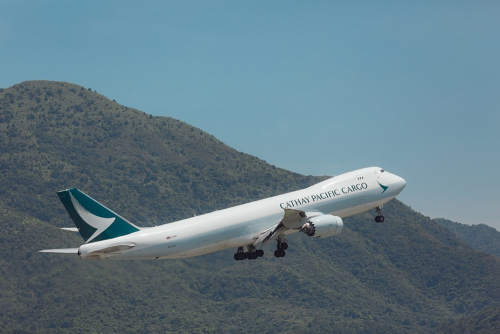Cathay Cargo expects lower China-US demand from May due to tariffs
Thursday, April 24, 2025
Hong Kong-based Cathay Cargo has benefited from the first traditional cargo peak of the year, but it is also preparing itself for potential disruption due to tariffs and expects decreased demand between China and the US from May.
Chief customer and commercial officer Lavinia Lau said that tariffs are “creating uncertainties that may cause disruptions to our cargo business, changes in travel demand, increased costs and pressure on supply chains, among other impacts”.
She added: “We expect a softening of general air cargo demand between the Chinese Mainland and the US due to the ongoing tariff situation and de minimis rule changes from early May.
”However, our network strength and flexibility in redeploying our freighters will allow us to adapt and redirect our focus to emerging opportunities. We will stay close to the market and monitor the developments vigilantly.”
Cathay Cargo carried 10.6% more cargo in March 2025 than in March 2024 in tonnage terms, while freight tonne kms (FTKs) improved by 6.4% year on year.
In the first three months of 2025, Cathay Cargo’s total tonnage increased by 12% compared with the same period in 2024. FTKs for the quarter increased by 5.8%.
In comparison to FTKs in March, Available Freight Tonne Kilometres (AFTKs) increased by 8.5% for the month, while load factor decreased by 1.2 percentage points year on year to 61.5%.
Lau said that during March the ”cargo business saw strong growth momentum as we entered the first traditional cargo peak of the year”.
She stressed that specialist cargo solutions continued to be an area of focus and Cathay Priority grow during the first quarter of 2025, while Cathay Cargo also launched its refreshed Cathay Fresh solution, plus an intermodal cold-chain route via the Hong Kong–Zhuhai–Macao Bridge, delivering chilled seafood from Southeast Asia into the Greater Bay Area through Cathay’s Hong Kong hub.
Cathay Cargo’s February airfreight volumes were also up nearly 12% year on year, despite the Lunar New Year holiday slowdown.